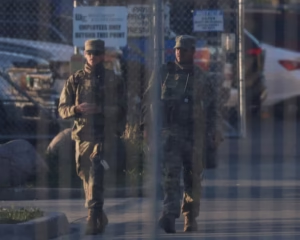The National Interagency Fire Center (NIFC) plays a crucial role in managing and coordinating wildfire responses across the United States. Located in Boise, Idaho, the NIFC serves as the central hub where multiple agencies come together to handle wildfire incidents and ensure resources are deployed efficiently. As wildfires become more frequent and intense, the importance of this center continues to grow.
NIFC brings together experts and resources from several federal, state, tribal, and local agencies. These agencies include the U.S. Forest Service, Bureau of Land Management, National Park Service, Fish and Wildlife Service, and the Bureau of Indian Affairs. The center acts as a coordination point, allowing these diverse agencies to work seamlessly in response to wildfire emergencies. By pooling their resources and knowledge, they can act quickly and effectively.
One of the main responsibilities of the National Interagency Fire Center is to coordinate the deployment of firefighting resources. This includes personnel, equipment, and aircraft that are essential in fighting wildfires. NIFC maintains a national inventory of these resources, allowing them to know what is available and where it is needed most. When a wildfire breaks out, the center can quickly send the right teams and tools to the affected area, sometimes across state lines. This rapid mobilization helps control fires before they spread further.
In addition to resource coordination, the NIFC supports firefighting efforts with logistics and communications. Fire incidents often require complex support systems to keep firefighters safe and effective. NIFC provides the necessary information, communications technology, and logistical support to connect different agencies on the ground. This support ensures that operations run smoothly even during large and complicated wildfire events.
The National Interagency Fire Center also plays an important role in training and information sharing. It helps train firefighters and other wildfire personnel so they are prepared for the challenges they may face. The center provides access to vital fire weather data, risk assessments, and other information that helps officials make informed decisions. Understanding fire conditions is key to planning and preventing further damage.
NIFC operates throughout the year but is especially active during the wildfire season when the risk of fires is highest. The center monitors wildfire activity nationwide and publishes regular reports on fire status and resource availability. These updates are valuable for agencies involved in wildfire management as well as for the public. By providing timely information and safety advisories, NIFC helps keep communities informed about ongoing wildfire threats.
The collaboration between multiple agencies at the National Interagency Fire Center is vital for addressing the increasing severity of wildfires. Climate change and dry conditions have led to more frequent fires that can quickly overwhelm local firefighting resources. The center’s ability to coordinate a unified response is essential for protecting lives, homes, and natural areas across the country.
Besides wildfires, NIFC also supports responses to other natural disasters when firefighting resources can be used effectively. This flexibility allows the center to assist in emergencies beyond fires, making it an important part of national disaster preparedness and response.
The National Interagency Fire Center’s work goes beyond managing the present wildfire season. By training personnel, managing resources, and sharing critical information, it helps build the nation’s capacity to face future fire threats. The center’s role ensures that when wildfires strike, the response is swift, coordinated, and effective.
As wildfires continue to pose serious challenges in many parts of the United States, the National Interagency Fire Center remains a vital institution. Its mission to bring together multiple agencies and coordinate resources makes it a cornerstone of wildfire management. Through its efforts, the center protects people, property, and the environment from the devastating effects of wildfires.







